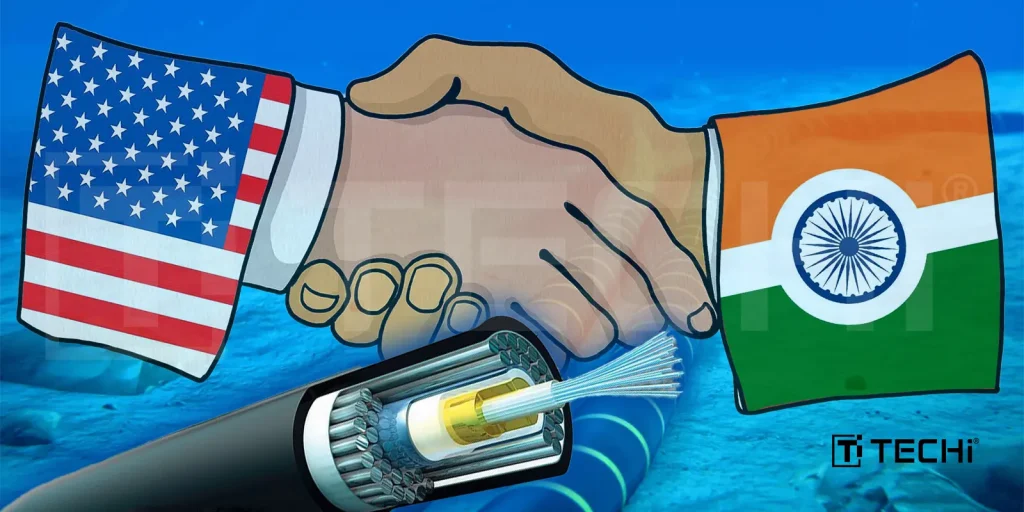Think of giving a message from one continent to another, not flying along the airwaves, but cable carrying that message beneath the ocean. Meta’s new venture, Project Waterworth, is all about bringing this vision into a reality, a huge undersea cable system that exceeds even the circumference of the Earth. This technological marvel is not just about faster memes or seamless video calls but is destined to change the face of global connectivity forever.
To change the paradigm of global connectivity, Meta plans to go for the construction of the world’s longest underwater cable named Project Waterworth. The 50,000 km (31,000 miles) subsea cable will connect the US, India, South Africa, and Brazil among other important regions to reinforce the digital infrastructure and allow for economic cooperation. Meta stated in a blog post, “Project Waterworth will bring industry-leading connectivity to the US, India, Brazil, South Africa, and other key regions. This project will enable greater economic cooperation, facilitate digital inclusion, and open opportunities for technological development in these regions”.
Connectivity Strengthening the Digital Infrastructure:
Waterworth will be the longest and technologically most advanced undersea cable deployment to date, far exceeding the circumference of the planet. Waterworth diverges from typical systems that utilize 8 to 16 fiber pairs and rather uses a groundbreaking system of 24 fiber pairs, which boosts data capacity and internet speed across connected regions. Meta claims this will support its own AI initiatives and the larger digital economy.
Meta said, “In India, where we’ve already seen significant growth and investment in digital infrastructure, Waterworth will help accelerate this progress and support the country’s ambitious plans for its digital economy. We’ve driven infrastructure innovation with various partners over the past decade, developing more than 20 subsea cables. This includes multiple deployments of industry-leading subsea cables of 24 fiber pairs – compared to the typical 8 to 16 fiber pairs of other new systems.”
The project coincides with India’s digital transformation, adding the kick that the growing digital economy requires. Through advancing digital investments in the country, Meta has already contributed to rapidly enhancing connectivity in India. Waterworth is expected to bring new life to this development by enhancing broadband access and consequently innovation and supporting the country’s technology vision. In the same way, improved internet access is expected to spur economic growth and digital transformation in South Africa and Brazil.
Undersea Cables, a Liability:
More than 95% of the world’s global Internet traffic carries on submarine cables. This emphasizes the importance of submarine cables in global communication, as the UK alone is equipped with about 60 submerged cables that handle 99% of the data in the UK. Increasing numbers of dependence bring with them concerns over vulnerabilities of undersea cables to geopolitical conflicts and accidents, as well as cyber threats.
Recent incidents have proven all of these. In January, NATO launched a mission to enhance surveillance over undersea cables at the Celtic Seas after there were reports of damages to critical infrastructures. In a similar vein, the Trump administration sanctioned a Russian company in 2018 for allegedly granting underwater surveillance capabilities to Moscow. Tonga suffered a nationwide blackout of internet access after damage to an undersea cable in July, halting business and daily life.
Regardless of the risks, Meta emphasized the durability as well as safety of Project Waterworth. Meta said, “It would lay its cable system up to 7,000 metres deep and use enhanced burial techniques in high-risk fault areas, such as shallow waters near the coast, to avoid damage from ship anchors and other hazards.”
Challenges and Controversies:
As Meta’s underwater cable project promises to change global connectivity, the company is never free from accusations concerning its policy. In January, CEO Mark Zuckerberg announced plans and stated that “He was ending professional fact-checking on Facebook and Instagram and would dramatically reduce the amount of censorship”. This has drawn heavy criticism about misinformation and argued concerns about the application of digital platforms in the control of content.
Project Waterworth is not just an engineering project, but rather a vision about a world that is more interconnected than ever through an undersea cable. Powered by worldwide undersea cables, this mega initiative aims to redefine digital access, economic growth, and technology innovations in associated geographies. As its disruptive innovation nature, this one too is associated with social challenge risks, from security to geopolitical tension. As the world watches, Meta is committed to embarking on an undersea odyssey that promises to make waves, literally and figuratively.
Read More: Amazing Facts About Wikipedia




